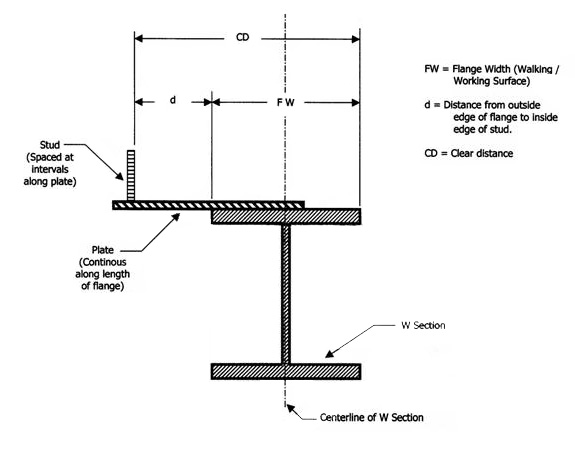- Standard Number:1926.754(c)(1)(i)
OSHA requirements are set by statute, standards and regulations. Our interpretation letters explain these requirements and how they apply to particular circumstances, but they cannot create additional employer obligations. This letter constitutes OSHA's interpretation of the requirements discussed. Note that our enforcement guidance may be affected by changes to OSHA rules. Also, from time to time we update our guidance in response to new information. To keep apprised of such developments, you can consult OSHA's website at https://www.osha.gov.
December 11, 2003
Zane Keniston
Safety Director
Delhi Steel Corporation
6333 Kirkville Road North
Kirkville, NY 13082
Re: §1926.754(c)(1)(i) -- revision of interpretation
Dear Mr. Keniston:
On September 19, 2002, you wrote the Directorate of Construction asking for an interpretation of §1926.754(c)(1)(i). On November 8, 2002, we responded to the specific scenario you described by stating, " as long as the 'threaded studs' do not project vertically from the top flange of the beam horizontally over the beam from the beam attachment, the shop installation of these studs would not be a violation of §1926.754(c)(1)(i)."
We included this interpretation in a draft set of questions and answers that we plan on adding to the current Steel Erection compliance directive [(CPL 02-01-034) (formerly CPL 2-1.34)]. The draft was circulated for comment to a number of industry stakeholders. Some of them disagreed with the November 8 response as being inconsistent with the purpose of the provision in light of how ironworkers move across steel beams.
After further review of the issue, we have decided to alter our interpretation of this provision. We are issuing a new interpretation, as described below, which will be included in a set of additional questions and answers that will be added to the Steel Erection Directive. The new interpretation on the issue you inquired about is as follows:
Question: Scenario: a continuous steel plate is welded to the top flange of a perimeter beam. On the exterior edge of the plate, threaded studs are attached vertically at specified intervals (see diagram below). The purpose of the studs is to allow for the attachment of wood blocking used by the roofers. Is shop attachment of these studs a violation of §1926.754(c)(1)(i)?

Answer: Section 1926.754(c)(1)(i) states:
Tripping hazards. Shear connectors (such as headed steel studs, steel bars or steel lugs), reinforcing bars, deformed anchors or threaded studs shall not be attached to the top flanges of beams, joists or beam attachments so that they project vertically from or horizontally across the top flange of the member until after the metal decking, or other walking/working surface, has been installed.
Under §1926.754(c)(1), "threaded studs" are prohibited from being installed prior to the decking where they project either vertically from the top flange of the beam, or horizontally across the top flange of the beam. As explained in the Preamble of the Final Rule (volume 66 of the Federal Register, page 5213, January 18, 2001), "when attachments, like shear connectors, are shop-welded to the top flange of beams, the resulting projections can create a significant tripping hazard." These pose a tripping hazard because, during the steel erection process, the top flanges of the beams serve as a walking surface.
In this scenario, a continuous steel plate is welded to the top flange of the beam. This, in effect, extends the width of the top flange and becomes part of the walking surface. Since the studs project vertically from the (extended) top flange, they pose a tripping hazard to the workers walking on the beam. Therefore, the shop installation of these studs would be a violation of §1926.754(c)(1)(i).
This letter replaces the one we issued to you on November 8, 2002. We apologize for any inconvenience this may cause. If you need additional information, please contact us by fax at: U.S. Department of Labor, OSHA, Directorate of Construction, Office of Construction Standards and Guidance, facsimile #202-693-1689. You can also contact us by mail at the above office, Room N3468, 200 Constitution Avenue, N.W., Washington, D.C. 20210, although there will be a delay in our receiving correspondence by mail.
Sincerely,
Russell B. Swanson, Director
Directorate of Construction

